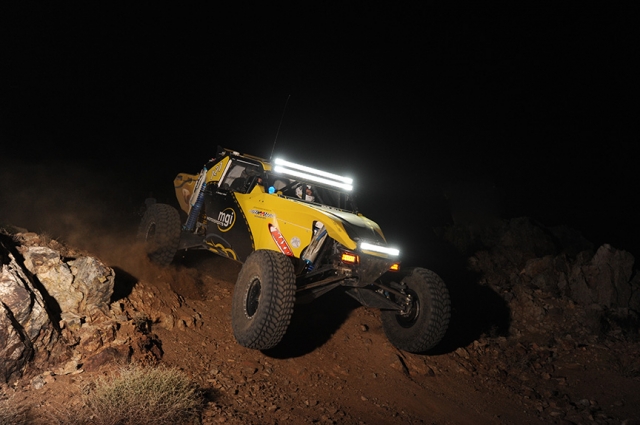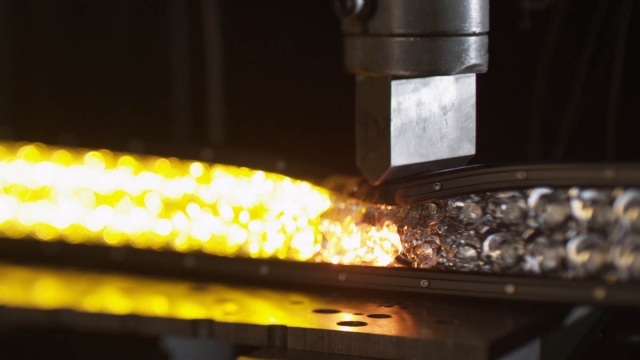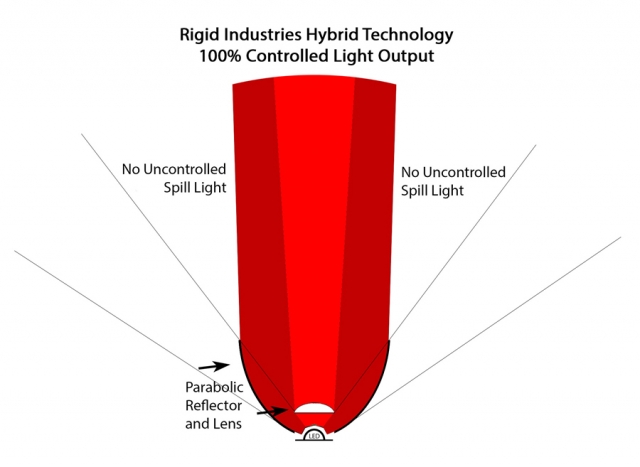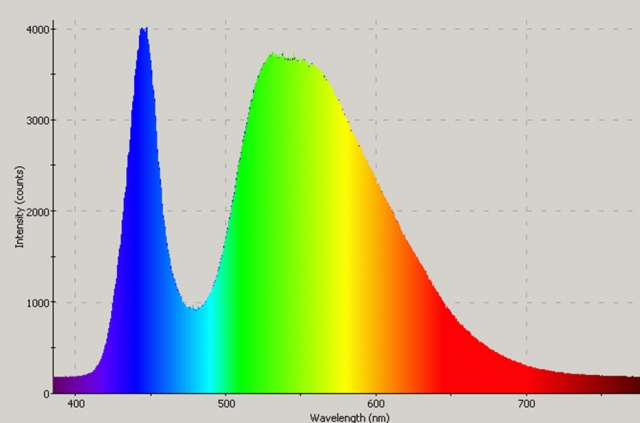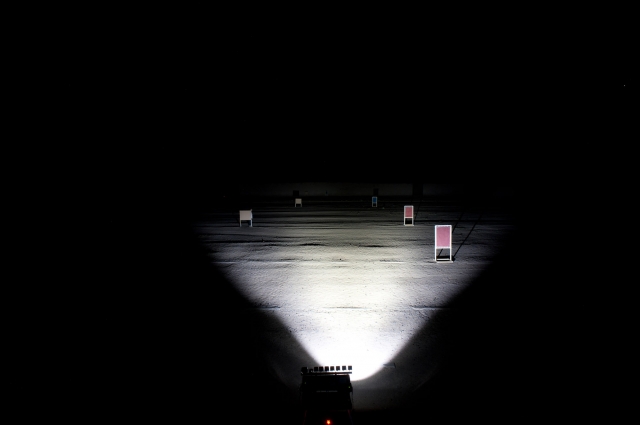One of the hottest trends in the off-road and truck market is LED light bars. While the LED light bar isn’t new, in recent times it just seems like if you don’t have one, you are in the dark. These light bars are highly desirable for their durability, styling and function.
 In addition to mounting the light bars on the truck cab or roll cages, many bumper manufacturers are starting to integrate them into bumpers hoping to attract more buyers. Over the past year, we have started seeing the light bars show up in grilles as well. You name it; someone is trying to figure out a way to use them.
In addition to mounting the light bars on the truck cab or roll cages, many bumper manufacturers are starting to integrate them into bumpers hoping to attract more buyers. Over the past year, we have started seeing the light bars show up in grilles as well. You name it; someone is trying to figure out a way to use them.
So with that much popularity, there is going to be a ton of imitators and only a few originators. “We are proud to be one of the originators. Our LED light bars date back to 2004,” says Miranda Fuller Director of Marketing for Rigid Industries.
 LED lighting bars are ideal for high impact and vibration environments like off road. LED light bars are solid state devices and so there is almost nothing inside of them that will break due to vibration. There is no glass or filaments to break or crack, rendering the light useless. On top of that, Rigid Industries solders all of its connections for ultimate reliability (not all companies do).
LED lighting bars are ideal for high impact and vibration environments like off road. LED light bars are solid state devices and so there is almost nothing inside of them that will break due to vibration. There is no glass or filaments to break or crack, rendering the light useless. On top of that, Rigid Industries solders all of its connections for ultimate reliability (not all companies do).
We figured that with so many companies flooding the marketplace with LED lighting, now would be a good time to really dive into the world of LED lighting and shine a light on what makes Rigid Industries not only a leader in the industry, but the company that all others are trying to imitate.
Origins
LED light bars can trace their origins back to off-road racing. In 2006, Rigid Industries started prototyping and building LED light bars for off-road racers and hardcore rock crawlers. At that time, Jason Christiansen (former professional baseball player) had started getting into off roading and came across Rigid Industries. Christiansen had just retired and wanted to get into the off-road market and thought this was the right opportunity. He purchased the small company and all of the rights to its products about nine years ago.
Christiansen's UTV that he added the original LED light bar to.
“It has been Christiansen’s focus to make technology that is innovative. The technology has to keep getting more and more amazing because of the fact that advances in technology continue. This isn’t a product that stays around long unless you get ahead with various aspects of it. So, he hired a team around him and brought in partners that would facilitate and make the company grow into a world class business and keep the process growing,” explained Fuller.
Even after extreme durability testing the lights still work.
King Of The Hill
Rigid Industries attitude towards lighting has always been simple. “If the light is bright, how do we make it brighter? We spend thousands and thousands of dollars having outside third part companies test the products,” commented Fuller.
With an owner who was a professional athlete, it is no wonder why being the best isn’t good enough. Things can always be made better and with continual investment, improvements can be made. In addition to seeking third-party test results, Rigid Industries does its own testing as well, usually on every light that goes out the door. Instead of the typical water dunk test, we actually pressurize every light close to 4 psi which simulates over 10 feet of depth underwater. “If the light has even the slightest leak, the customer doesn’t ever see it. Then, we also perform on and burn in, output, color, and pattern testing. Everything has to be right or we don’t send it,” continued Fuller.
These are above and beyond the standardized tests that regular light companies do. To really take it up a notch, Rigid Industries brings out the big guns. “We say that we stand up to anything. So, we take them outside and cut them with a chain saw, run them over with a car, hit them with a baseball bat,” exclaims Fuller.
Innovation Through Testing
Heat Sink
Testing in general is meant to show the weaknesses of your product. If you go to the extremes that Rigid Industries does, then you are bound to find the weakest link in every aspect. So, what then do you do once you find where a weak link is? You fix it.
“As the technology evolved and we brought in so many brilliant engineers, they initially focused on improving the heat sink,” Fuller pointed out. The testing they did showed that as the LED chip (LED stands for Light Emitting Diode) gets hot, it looses some of its intensity and life expectancy. Over time, this leads to failure. If they could do something more to keep the diode cool, they would be able to extend the life of the lights while improving the performance. They ended up figuring out multiple innovative ways of dissipating the heat through heat sinks and with multiple patents pending to prove it. This is a major contributing factor to their LEDs being rated with a 50,000 hour lifespan.
(Left) New two-piece cast housing on an E-Series light bar. (Right) Original heat sink design on an E-Series light bar

Rigid Industries lights are found on a large quantity of industrial equipment. They light the job site extremely well and require very little current draw.
Optics
Optics are probably one of the biggest differences between all of the lighting out there. It is also probably the most complicated of all the subjects. So, we are going to break this down into three main sections; LED, directionality and brightness.
LED
LEDs are a lot like diamonds. (For those of you who have had to buy them, this will make complete sense). LEDs come in a wide range of Bin which are based on color and output. LEDs color is graded on a Correlated Color Temperature (CCT) scale. Rigid LED’s are between 5700 and 5900 Kelvin. This is the premium range for LEDs and would be the equivalent to a D on a diamond scale. The larger this range, the lower the quality of LED and the cheaper it is. Rigid Industries only buys this premium quality LED to ensure maximum brightness, and color. It also ensures that all of their lights will have the same color. One down side to this system is that the LED’s will all have the same part numbers. (They are checked after production). The same LED part number could have up to 40% output difference (brightness).
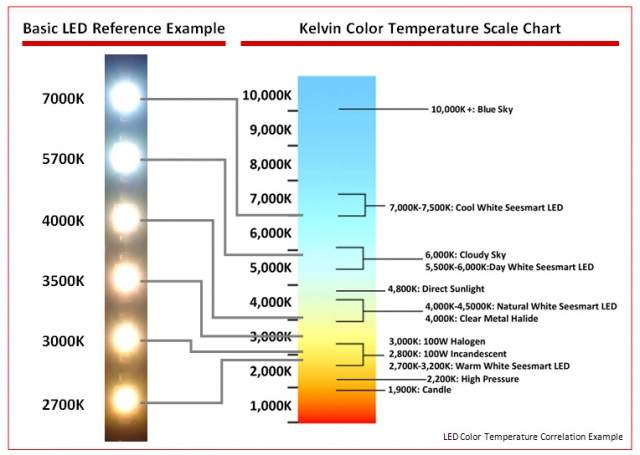
Photo courtesy of Seesmart, Inc
Some LED manufacturers don’t pay for the tight Bin LED’s. This means the variation could be up to 2000 Kelvin and 40% brightness output difference. That is why sometimes you see lights with purple, yellow, or another color tint. Many of the newer LED companies and cheaper options come with lower grade LEDs. While they may be purchasing from the same manufacturer, they aren’t buying the same grade. It is the same thing with diamonds, just because we buy our diamonds from the same mine, doesn’t mean that they are all the same quality diamonds.

The pensile that is in front of the boat is 740 yards (2220 feet) away and it is being lit up like a Christmas tree with a 40” E series light bar.
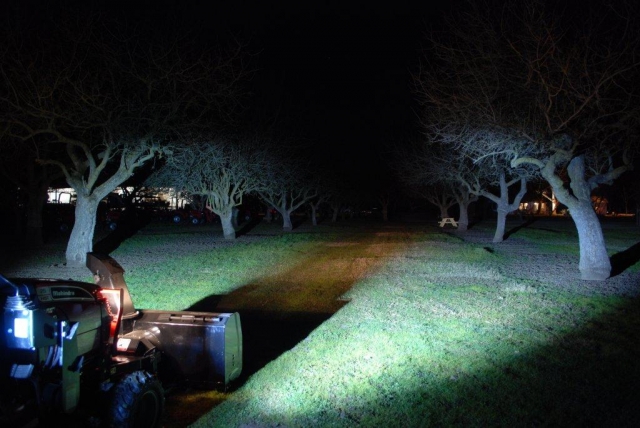
Most people don’t realize that Rigid Industries lights are used on a lot of things. It is pretty common to see them on emergency vehicles, boats, equipment, pretty much anything that works at night.
Directionality
An LED emits light in a uniform symmetrical arc. This arc of light is measured in what is called RAW Lumens (remember that for later). Most companies use a parabolic reflector around their LED to direct or focus the light beam straight ahead. The results are that the light is more focused, but there is still a huge amount of light that is wasted. This wasted light is called spill light.
To rectify this situation, some companies use a tighter parabola. This certainly focuses the light better and there is much less spill light. This usually results in capturing 30 to 50% of the arc radius (raw lumens).
shoots it like a cannon straight out in front – Miranda Fuller
“The engineers also worked on improving the optics. The original Hybrid optic has been used for at least four years now, everything is new around it. They strategized as to what they would like the light to do? So, each optic focuses the light with little or no spill light. The reflector and the optic typically grab close to 97% the light (raw lumens) and shoots it like a cannon straight out in front. With less spill light or wasted light, it will always project further,” explained Fuller.
What Rigid Industries has been able to do is create a range of optics that will work for almost every application imaginable. In their most recent introduction, the Hyperspot, they are able to direct almost 100 percent of the little three watt LED forward with a five degree beam. “That is pretty much how we own the fact that we are the farther forward projecting LED light on the market,” Fuller continued.
It is amazing what Rigid Industries has been able to accomplish with their lighting. It is so much safer and easier to drive at night because you can actually see what is in front of you.
Brightness
When it comes to how bright a light is, we need to first discuss what light is.
What is light?
Most light is comprised of multiple wavelengths (measured in nanometers). White light (sun light) is comprised of Red, Orange, Yellow, Green, Blue, and Violet wavelengths (a common acronym is Roy G BV). If you have ever seen light refracting through a prism or even a water droplet, you will notice that there are multiple colors. As the light enters the object, the different wavelengths are bent at angles. This separates the colors that make up that light color. For sunlight, the most common example of this would be a rainbow where all of the primary colors can be seen (Red, Orange, Yellow, Green, Blue, and Violet).
So, what does that mean to you?
With the understanding of what light is comprised of, we can measure the intensity of these wavelengths to get a true understanding of how bright a light is. Light intensity is generally measured in something called Lux or Candela. Lux is true measurement of light on a surface at any specific distance. Candela is a SI (System International) base unit of intensity, like meter, kilogram, and second. Candela is basically the measure of how intense a light source is, in a particular direction. Candela is a very simple math formula, it’s lux*distance2. While other companies use raw lumens which are really a generic number, Rigid specifies peak candela and lux at multiple distances. “Candela is all actual measured data that our customers can verify with a free smart phone app. Search for ‘Light Meter app’, there are multiple good ones for free. Measure a Rigid light and then anybody else’s at the same distance and compare true output,” exclaimed Fuller.
(Top) Rigid's LED's, (Left) Sun light, (Center) HID lights, and (Right) Florescent light.
Wattage by itself tells you nothing of light output. It is strictly a measure of power that is needed to operate. So really, the industry relies on Lumen. Lumen is an SI unit that is derived from Luminous flux (or RAW Lumens). Basically, it is the amount of light that is produced in all direction. It does not directly account for intensity or directionality (Candela!). On top of that, standard practice is to claim only raw lumens, which doesn’t account for optical technology. An effective lumen reading is the actual amount of total light. Regardless of the claimed number, effective or raw consumers have no way to measure lumen output so it’s easy for companies to lie! It is basically like telling your friends that you got rear ended. If no one asks, then it could have been by a guy on a bicycle or it could have been by a freight train (ah, intensity does matter!).
As we discussed earlier, Rigid Industries and a couple other companies have come up with various ways of directing the light with their optics. This direction helps intensity because more of the light is being focused in front of the light. As illustrated earlier, Rigid has patents that allow them to focus more of their light, where you need it, resulting in a much higher Candela rating.
So, it is a matter of how much light is available (Effective Lumen) but more importantly how that light is being used (Candela). That is really the true measure of how well a light works.
Durability
Thanks to Rigid Industries extreme testing, they have ensured that their lights are as durable as possible. “We have spent a lot of time doing durability and torcher testing in our housings and the way they fit together. So even on impact, there is a rubber gasket behind the face that will contract to absorb some of that energy,” said Fuller.
In addition to focusing on their housings, Rigid Industries spends quite a bit of time testing their brackets and hardware. This is often over looked by many manufacturers. For most people, they would look at the size and thickness of their brackets and think it is overkill. “We test every aspect of our installation kits to ensure that they will last as long as our lights and are just as rigid. The last thing we want is for a light to fall off a truck doing 90 miles an hour in the dark during a race,” cautioned Fuller.
 Rigid Industries also employs some of the best electrical engineers in the world. Almost all Rigid products will take any voltage between 9 and 30vdc. All light units have reverse voltage protection, over and under voltage protection, and thermal protection. Say you accidently set your turnout gear over the light and then turn it on, nothing bad will happen! The light or gear won’t get damaged, it’s all managed electronically in the micro processor on every board! These are all features that other companies brag about, but for Rigid it is just business as usual creating the best products in the world.
Rigid Industries also employs some of the best electrical engineers in the world. Almost all Rigid products will take any voltage between 9 and 30vdc. All light units have reverse voltage protection, over and under voltage protection, and thermal protection. Say you accidently set your turnout gear over the light and then turn it on, nothing bad will happen! The light or gear won’t get damaged, it’s all managed electronically in the micro processor on every board! These are all features that other companies brag about, but for Rigid it is just business as usual creating the best products in the world.
Closing
Basically, no matter which way you look at it, Rigid Industries is not only a premium lighting company, but they are really light years ahead of anyone. Yeah, they may cost more than most, but you are actually getting a better deal. If you don’t factor in the higher quality housings or the lifespan,and only look at the lighting, if you divide their price by the Candela that they are providing, you will actually see that Rigid is offering a ton better value for your money. You are actually getting more useable light per dollar, than the cheap imitation Asian brands. Don’t believe us? Just compare the lights side by side and you will see why even Fire and Rescue companies across the nation are turning to Rigid Industries when their lives are on the line!
(Top) Rigid D2 Drive, (Upper Left) Rigid Q4 Drive, (Upper Right) Rigid E-10 Combo, (Lower Left) Rigid E-20 Combo, (Lower Right) Rigid E-50 Combo






